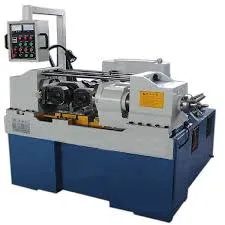
-
 Afrikaans
Afrikaans -
 Albanian
Albanian -
 Amharic
Amharic -
 Arabic
Arabic -
 Armenian
Armenian -
 Azerbaijani
Azerbaijani -
 Basque
Basque -
 Belarusian
Belarusian -
 Bengali
Bengali -
 Bosnian
Bosnian -
 Bulgarian
Bulgarian -
 Catalan
Catalan -
 Cebuano
Cebuano -
 Corsican
Corsican -
 Croatian
Croatian -
 Czech
Czech -
 Danish
Danish -
 Dutch
Dutch -
 English
English -
 Esperanto
Esperanto -
 Estonian
Estonian -
 Finnish
Finnish -
 French
French -
 Frisian
Frisian -
 Galician
Galician -
 Georgian
Georgian -
 German
German -
 Greek
Greek -
 Gujarati
Gujarati -
 Haitian Creole
Haitian Creole -
 hausa
hausa -
 hawaiian
hawaiian -
 Hebrew
Hebrew -
 Hindi
Hindi -
 Miao
Miao -
 Hungarian
Hungarian -
 Icelandic
Icelandic -
 igbo
igbo -
 Indonesian
Indonesian -
 irish
irish -
 Italian
Italian -
 Japanese
Japanese -
 Javanese
Javanese -
 Kannada
Kannada -
 kazakh
kazakh -
 Khmer
Khmer -
 Rwandese
Rwandese -
 Korean
Korean -
 Kurdish
Kurdish -
 Kyrgyz
Kyrgyz -
 Lao
Lao -
 Latin
Latin -
 Latvian
Latvian -
 Lithuanian
Lithuanian -
 Luxembourgish
Luxembourgish -
 Macedonian
Macedonian -
 Malgashi
Malgashi -
 Malay
Malay -
 Malayalam
Malayalam -
 Maltese
Maltese -
 Maori
Maori -
 Marathi
Marathi -
 Mongolian
Mongolian -
 Myanmar
Myanmar -
 Nepali
Nepali -
 Norwegian
Norwegian -
 Norwegian
Norwegian -
 Occitan
Occitan -
 Pashto
Pashto -
 Persian
Persian -
 Polish
Polish -
 Portuguese
Portuguese -
 Punjabi
Punjabi -
 Romanian
Romanian -
 Russian
Russian -
 Samoan
Samoan -
 Scottish Gaelic
Scottish Gaelic -
 Serbian
Serbian -
 Sesotho
Sesotho -
 Shona
Shona -
 Sindhi
Sindhi -
 Sinhala
Sinhala -
 Slovak
Slovak -
 Slovenian
Slovenian -
 Somali
Somali -
 Spanish
Spanish -
 Sundanese
Sundanese -
 Swahili
Swahili -
 Swedish
Swedish -
 Tagalog
Tagalog -
 Tajik
Tajik -
 Tamil
Tamil -
 Tatar
Tatar -
 Telugu
Telugu -
 Thai
Thai -
 Turkish
Turkish -
 Turkmen
Turkmen -
 Ukrainian
Ukrainian -
 Urdu
Urdu -
 Uighur
Uighur -
 Uzbek
Uzbek -
 Vietnamese
Vietnamese -
 Welsh
Welsh -
 Bantu
Bantu -
 Yiddish
Yiddish -
 Yoruba
Yoruba -
 Zulu
Zulu
Innovative Thread Rolling Machine in Action Showcasing Precision and Efficiency
The Precision of Thread Rolling Machines in Modern Manufacturing
In the realm of manufacturing, the production of precision fasteners and components is essential for various industries, from automotive to aerospace. Among the multiple techniques employed, thread rolling has garnered attention for its efficiency and the quality of its finished products. The latest advancements in thread rolling machine technology have revolutionized the way threads are manufactured, resulting in superior strength, durability, and precision.
Thread rolling machines operate on a straightforward yet effective principle they deform a rod or bar of material into a threaded profile without removing any material. This process is known as cold forming and is favored due to several advantages over traditional cutting methods. When a workpiece is rolled between two or more dies, the material's density increases, leading to enhanced mechanical properties. This method produces threads with a finer surface finish, tighter tolerances, and improved fatigue resistance compared to cut threads.
The Precision of Thread Rolling Machines in Modern Manufacturing
One of the most significant factors contributing to the popularity of thread rolling machines is their versatility. These machines can handle a variety of materials, including steel, aluminum, and even certain plastics. The ability to work with multiple materials without extensive modifications allows manufacturers to diversify their product offerings. Additionally, modern thread rolling machines are equipped with advanced controls and automation features that enhance precision and reduce human error, further ensuring consistent quality across production runs.
thread rolling machine video

The benefits of thread rolling do not stop with efficiency and quality; they also extend to cost-effectiveness. By using more cost-effective materials and reducing waste, manufacturers can achieve better profit margins. Moreover, the longevity of parts produced through thread rolling is often superior, reducing the need for replacements and repairs over time. This aspect is particularly important in industries where component failure can have catastrophic consequences, such as aerospace or medical device manufacturing.
Video demonstrations of thread rolling machines showcase these advantages in action. Such videos often highlight the intricate process—from the initial feeding of raw material into the machine to the final product emerging from the rolling process. Observers can appreciate the precision involved as the rollers shape the threads seamlessly and efficiently. Additionally, these videos often provide insights into the various machines available in the market, showcasing how different designs and technologies cater to specific manufacturing needs.
Safety is another critical aspect observed in thread rolling machine operations. Modern machines are designed with numerous safety features to protect operators, including guarding systems and emergency stop functions. Training is also essential, as operators need to understand the intricacies of machine operation to ensure not only their safety but also the integrity of the products being manufactured.
In conclusion, thread rolling machines are an integral part of modern manufacturing processes. Their ability to produce high-quality, durable threaded components quickly and cost-effectively makes them a preferred choice for many industries. As technology continues to advance, we can expect even more innovations in thread rolling machinery, allowing manufacturers to achieve greater efficiencies and product quality. Videos showcasing these machines and their capabilities provide valuable resources for understanding their significance in today's manufacturing landscape. The evolution of thread rolling is a testament to the endless potential for growth and improvement in the manufacturing field.
